7 min read
Guide to environmental certification: which ones should you choose?
By: Marina Skanche on Apr 29, 2021 3:49:01 PM
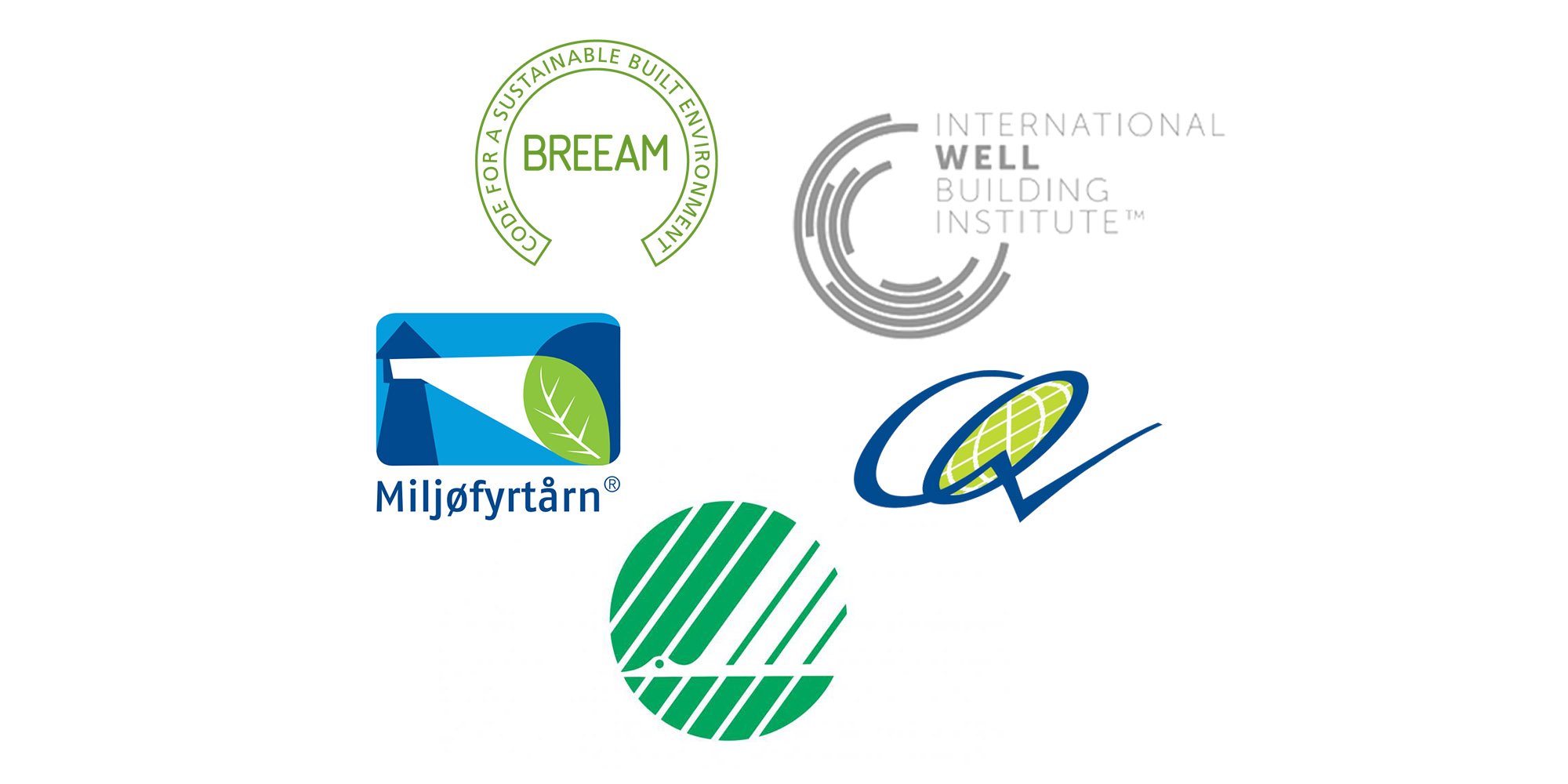
If you or your company want to be at the forefront alongside other forward-looking green companies, environmental certification is a hallmark of quality when it comes to sustainability. There are a number of different environmental certification systems, such as BREEAM, the Nordic Ecolabel and the Eco-Lighthouse. What exactly is the difference between these systems? And how can one environmentally certify a company or a building?
We ask these and several other key questions to our circular advisor Elin Hansen who has a background as an environmental consultant and is well acquainted with several of the environmental certification systems.
What are the most important certifications in the construction industry? And what do they involve?We ask these and several other key questions to our circular advisor Elin Hansen who has a background as an environmental consultant and is well acquainted with several of the environmental certification systems.
BREEAM
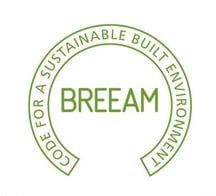 The abbreviation stands for 'Building Research Establishment Environmental Assessment Method'. The scheme has a wide range of predefined themes and criteria for construction projects that give points within a predefined scale with five certificate levels from "Pass" to "Outstanding". The scheme is international, but because there is variation in national legislation and what is considered best practice in different countries, there are also BREEAM manuals adapted to certain countries - such as BREEAM-NOR which only applies in Norway. BREEAM-NOR measures performance within these topics: Management, Health and the indoor environment, Energy, Transport, Water, Materials, Waste, Land use and ecology, as well as Pollution. In addition, you can apply for "extra" points related to innovation. Some points in the manual are mandatory minimum requirements, while the vast majority of points are optional and can be adapted to the individual level of ambition and project type. There are several manuals for different purposes, such as new buildings, rehabilitation, and area development. The score is verified by an independent auditor, and is finally awarded by the NGBC (Green Building Alliance), which is the Norwegian administrator of the BREEAM scheme.
The abbreviation stands for 'Building Research Establishment Environmental Assessment Method'. The scheme has a wide range of predefined themes and criteria for construction projects that give points within a predefined scale with five certificate levels from "Pass" to "Outstanding". The scheme is international, but because there is variation in national legislation and what is considered best practice in different countries, there are also BREEAM manuals adapted to certain countries - such as BREEAM-NOR which only applies in Norway. BREEAM-NOR measures performance within these topics: Management, Health and the indoor environment, Energy, Transport, Water, Materials, Waste, Land use and ecology, as well as Pollution. In addition, you can apply for "extra" points related to innovation. Some points in the manual are mandatory minimum requirements, while the vast majority of points are optional and can be adapted to the individual level of ambition and project type. There are several manuals for different purposes, such as new buildings, rehabilitation, and area development. The score is verified by an independent auditor, and is finally awarded by the NGBC (Green Building Alliance), which is the Norwegian administrator of the BREEAM scheme.
 The abbreviation stands for 'Building Research Establishment Environmental Assessment Method'. The scheme has a wide range of predefined themes and criteria for construction projects that give points within a predefined scale with five certificate levels from "Pass" to "Outstanding". The scheme is international, but because there is variation in national legislation and what is considered best practice in different countries, there are also BREEAM manuals adapted to certain countries - such as BREEAM-NOR which only applies in Norway. BREEAM-NOR measures performance within these topics: Management, Health and the indoor environment, Energy, Transport, Water, Materials, Waste, Land use and ecology, as well as Pollution. In addition, you can apply for "extra" points related to innovation. Some points in the manual are mandatory minimum requirements, while the vast majority of points are optional and can be adapted to the individual level of ambition and project type. There are several manuals for different purposes, such as new buildings, rehabilitation, and area development. The score is verified by an independent auditor, and is finally awarded by the NGBC (Green Building Alliance), which is the Norwegian administrator of the BREEAM scheme.
The abbreviation stands for 'Building Research Establishment Environmental Assessment Method'. The scheme has a wide range of predefined themes and criteria for construction projects that give points within a predefined scale with five certificate levels from "Pass" to "Outstanding". The scheme is international, but because there is variation in national legislation and what is considered best practice in different countries, there are also BREEAM manuals adapted to certain countries - such as BREEAM-NOR which only applies in Norway. BREEAM-NOR measures performance within these topics: Management, Health and the indoor environment, Energy, Transport, Water, Materials, Waste, Land use and ecology, as well as Pollution. In addition, you can apply for "extra" points related to innovation. Some points in the manual are mandatory minimum requirements, while the vast majority of points are optional and can be adapted to the individual level of ambition and project type. There are several manuals for different purposes, such as new buildings, rehabilitation, and area development. The score is verified by an independent auditor, and is finally awarded by the NGBC (Green Building Alliance), which is the Norwegian administrator of the BREEAM scheme.The Nordic Ecolabel
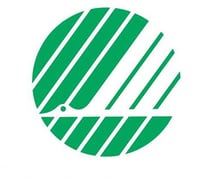 The Nordic Ecolabel is a scheme that is well established and well-known in Norway, and which issues certificates related to a large number of products and services. To Ecolabel a product, you must document compliance with the environmental requirements in the set of criteria for the relevant product group. The Nordic Ecolabel sets many and strict requirements for the entire product life cycle from raw material to production, use and reuse. The Nordic Ecolabel checks the information, and issues the license to use the Ecolabel during the years in which the relevant claim document is valid. You can, for example, label entire houses (new buildings), renovations that constitute a certain scope of existing buildings, or you can choose to use labeled individual products in buildings. More information about Nordic Ecolabelled products and criteria sets can be found on their website: https://www.svanemerket.no/svanens-krav/byggevarer-og-hus/
The Nordic Ecolabel is a scheme that is well established and well-known in Norway, and which issues certificates related to a large number of products and services. To Ecolabel a product, you must document compliance with the environmental requirements in the set of criteria for the relevant product group. The Nordic Ecolabel sets many and strict requirements for the entire product life cycle from raw material to production, use and reuse. The Nordic Ecolabel checks the information, and issues the license to use the Ecolabel during the years in which the relevant claim document is valid. You can, for example, label entire houses (new buildings), renovations that constitute a certain scope of existing buildings, or you can choose to use labeled individual products in buildings. More information about Nordic Ecolabelled products and criteria sets can be found on their website: https://www.svanemerket.no/svanens-krav/byggevarer-og-hus/CEEQUAL
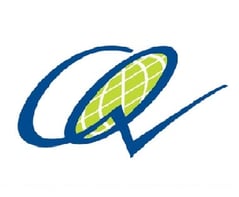 This scheme originates from the same organisation that owns the BREEAM scheme (Building Research Establishment). The abbreviation stands for 'Civil Engineering Quality Assessment & Award Scheme'. The scheme is aimed at construction projects, such as roads, railways, bridges, landscape architecture and parks. Unlike BREEAM, there is no Norwegian version, so projects must comply with the international manual.
This scheme originates from the same organisation that owns the BREEAM scheme (Building Research Establishment). The abbreviation stands for 'Civil Engineering Quality Assessment & Award Scheme'. The scheme is aimed at construction projects, such as roads, railways, bridges, landscape architecture and parks. Unlike BREEAM, there is no Norwegian version, so projects must comply with the international manual.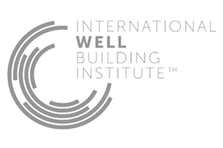 WELL Building Standard is a certification for health-promotive buildings. The framework is aimed at identifying, measuring, verifying and following up building qualities that affect the health and well-being of those who use a building. WELL can be used for both new and existing buildings, and covers topics such as air, water, nutrition, light, exercise, comfort and mental health. You can certify the building body (Core in Shell) or the building with the interior in use. One can WELL-certify commercial buildings, housing, school, trade, restaurants and commercial kitchens. The scheme is currently not widespread in Norway.
WELL Building Standard is a certification for health-promotive buildings. The framework is aimed at identifying, measuring, verifying and following up building qualities that affect the health and well-being of those who use a building. WELL can be used for both new and existing buildings, and covers topics such as air, water, nutrition, light, exercise, comfort and mental health. You can certify the building body (Core in Shell) or the building with the interior in use. One can WELL-certify commercial buildings, housing, school, trade, restaurants and commercial kitchens. The scheme is currently not widespread in Norway.The Eco-lighthouse
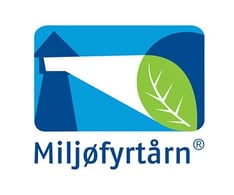 In contrast to the previously mentioned schemes, the Eco-lighthouse is a certification scheme aimed at quality systems for companies. Eco-Lighthouse is Norway's most used certificate for companies that want to document their environmental efforts and show social responsibility. The scheme is made up of a combination of basic common criteria, criteria for the building owner or tenant, as well as industry criteria (for approx. 80 different industries). For developers in the real estate industry, the criteria cover topics such as management, purchasing, energy, transport, working environment, aesthetics and waste. Eco-Lighthouse is often perceived as a simplified version of environmental certification of quality systems than the more comprehensive ISO 14001 scheme. Read more here: https://www.miljofyrtarn.no/sok-sertifiseringskriterier/#avansert_sok_kriterier
In contrast to the previously mentioned schemes, the Eco-lighthouse is a certification scheme aimed at quality systems for companies. Eco-Lighthouse is Norway's most used certificate for companies that want to document their environmental efforts and show social responsibility. The scheme is made up of a combination of basic common criteria, criteria for the building owner or tenant, as well as industry criteria (for approx. 80 different industries). For developers in the real estate industry, the criteria cover topics such as management, purchasing, energy, transport, working environment, aesthetics and waste. Eco-Lighthouse is often perceived as a simplified version of environmental certification of quality systems than the more comprehensive ISO 14001 scheme. Read more here: https://www.miljofyrtarn.no/sok-sertifiseringskriterier/#avansert_sok_kriterierEnvironmental certification can strengthen a company's reputation, but is it likely that certification may become a requirement for all new buildings in the future?
The question of whether certification can become a requirement for all new buildings in the future has been much discussed in Norway in the last couple of years, especially in connection with the Norwegian authorities soon replacing the current technical regulations, TEK 17, with a new revision. There is broad agreement in the construction and real estate industry that Norway needs much stricter national rules if we are going to be able to meet our climate commitments with equal framework conditions for the entire industry. The political agreement has so far not been as clear. Although Norway is involved in introducing increasingly stricter requirements via the EU, there is a large gap between the minimum requirements in regulations and the necessary level of investment for the industry. It is probably more likely that the industry mobilises itself, and sets requirements that are stricter than the minimum requirements in the legislation. Examples of this already exist, in that both public actors and private property developers are increasingly demanding both certification, and also common climate requirements for suppliers.
Can reuse of building materials contribute to environmental certification?
Requirements for re-use are currently not mandatory, but some schemes have sets of criteria that pay off for carrying out re-use. BREEAM, for example, credits a reuse assessment. The Nordic Ecolabel for renovation requires a certain proportion of reuse.
Related Posts
Circular economy in Scandinavia
We’re going to save the planet. Within 10 years, climate change will have stopped. We will be ...
See how the public sector is investing in reuse with Loopfront
In February, Klimapartnere launched a new map service called klimakartet.no, which shows the ...
SWECO conducts sircular surveying for Bergen Municipality
Reuse surveying is an effective way to get an overview of what resources you have available, so ...


